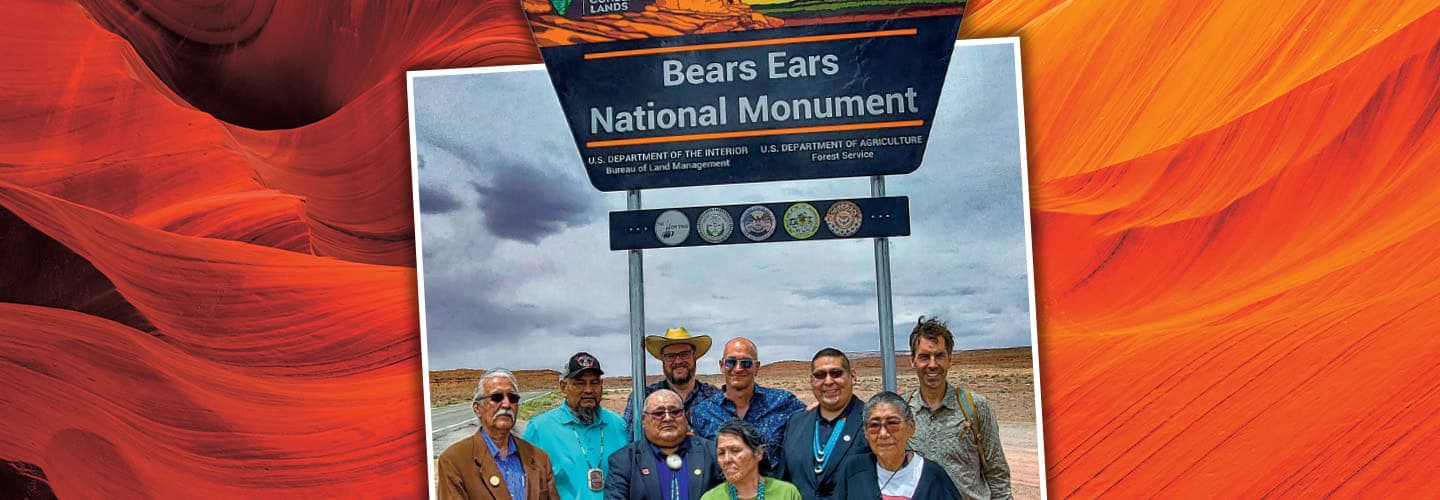© Tim Peterson
Carleton Bowekaty (third from right)
Every year, hundreds of thousands of people visit Bears Ears National Monument in Utah. To the nearly 20,000 Native people who live nearby, Bears Ears is more than a tourist attraction. To them, the land is sacred. For centuries, the area’s cliff tops and canyons were home to their ancestors.
Now five Tribal Nations are returning to the land. In June, they signed an agreement with the U.S. government to work together to protect Bears Ears.
“We are being invited back to our homelands to help repair them,” says Carleton Bowekaty. He’s the lieutenant governor of the Pueblo of Zuni. That’s one member of the coalition of Tribal Nations that will co-manage the area. The others are the Navajo Nation, Ute Mountain Ute, Ute Indian Tribe, and Hopi.
Every year, hundreds of thousands of people visit Bears Ears National Monument. It’s in Utah. Nearly 20,000 Native people live near Bears Ears. To them, the area is more than a tourist attraction. The land is sacred. For centuries, the area’s cliff tops and canyons were home to their ancestors.
Now five Tribal Nations are returning to the land. In June, they signed an agreement with the U.S. government. They will work together to protect Bears Ears.
“We are being invited back to our homelands to help repair them,” says Carleton Bowekaty. He’s the lieutenant governor of the Pueblo of Zuni. That’s one member of the coalition of Tribal Nations that will co-manage the area. The others are the Navajo Nation, Ute Mountain Ute, Ute Indian Tribe, and Hopi.

